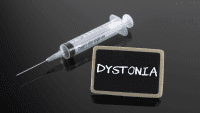Your recognition of troubling signs and symptoms results in prompt diagnosis and treatment.
Takeaways:
- Hypopituitarism is the deficient secretion of one or more pituitary hormones.
- The most common cause is a benign or malignant mass.
- Symptoms include decreased muscle strength and bone density, lethargy, anorexia, headache, impotency, and decreased body hair.
- Lifelong treatment includes mass removal, hormone replacement, and hormone-regulating medications.
You’re assigned a new patient, Brad Lawson*, a 45-year-old man who had surgery 3 days ago after fracturing his femur. During your morning assessment, Mr. Lawson tells you he’s seeing double of every object in his room and that he also has a headache. During your neurologic assessment, you note limited eye movement and that he squints with pain in response to your pen light. You also note that he has decreased body hair and dry skin.
While speaking with the patient and his wife you learn that the double vision (diplopia) is intermittent and has occurred for the past 9 months. Mrs. Lawson also tells you that her husband has had a decreased sex drive and limited sexual performance. She asks if these symptoms could be related to her husband’s headaches. Mr. Lawson states that he’s been extremely tired and hasn’t had much of an appetite.
When you review the patient’s health history, you notice a 10-pound weight loss since his last clinic appointment a month ago. This information and your assessment findings lead you to activate the rapid response team (RRT). Mr. Lawson’s vital signs are blood pressure 126/76 mmHg, heart rate 78 beats per minute, oxygen level 99% on room air, respiratory rate 18 breaths per minute, and temperature 99.2° F (37.33° C). He reports his pain level as 4/10.
On the scene
The RRT’s assessment aligns with yours. The room is darkened to decrease stimuli, and the provider orders a complete blood count, comprehensive metabolic panel, and thyroid-stimulating hormone (TSH) level. The patient is transferred to radiology for a head and neck X-ray, computed tomography scan, and magnetic resonance imaging.
Outcome
The radiologist concludes that the patient has an abnormality of the bony nest surrounding the pituitary gland, which is diagnosed as pituitary adenoma. The provider orders additional lab work including growth hormone (GH), luteinizing hormone (LH), adrenocorticotropic hormone (ACTH), antidiuretic hormone (ADH), testosterone, and follicle-stimulating hormone (FSH) levels. The results show low levels of GH, LH, FSH, and gonadotropin; elevated TSH; and normal ACTH and ADH. Mr. Lawson is diagnosed with hypopituitarism and referred to an endocrinologist.
Education
Hypopituitarism is the deficient secretion of one or more pituitary hormones. One common cause is a benign or malignant mass. In Mr. Lawson’s case, the cause is pituitary adenoma. If left untreated, hypopituitarism symptoms will worsen.
In anticipation of a referral to the endocrinologist, you teach Mr. Lawson and his wife about hypopituitarism and the signs and symptoms of deficient pituitary hormones, including decreased muscle strength and bone density, increased risk of fractures, lethargy, anorexia, headache, impotence, decreased libido, and decreased body hair. The condition requires lifelong treatment, which may include adenoma removal, hormone replacement, and hormone-regulating medication. You also explain the adverse reactions (gynecomastia, acne, baldness, and prostate enlargement) Mr. Lawson may experience with transdermal testosterone hormone replacement prescribed to treat low gonadotropin levels.
Your quick response in reaction to the patient’s signs and symptoms ensured prompt diagnosis and treatment.
*Name is fictitious.
The authors work at HaysMed Convenient Care Clinic. Alicia Arias is a manager and provider. Jana Zeller is a supervisor of the progressive care unit.
References
Ignatavicius DD, Workman ML, Rebar C, Heimgartner NM. Medical-Surgical Nursing: Concepts for Interprofessional Collaborative Care. 10th ed. St. Louis, MO: Elsevier Evolve; 2020.
Kim SY. Diagnosis and treatment of hypopituitarism. Endocrinol Metab. 2015;30(4):443-55. doi:10.3803/EnM.2015.30.4.443
Snyder, PJ. (2021, October 18). Diagnosis and Treatment of hypopituitarism. UpToDate.


















